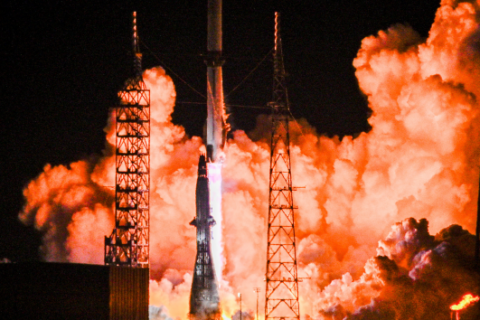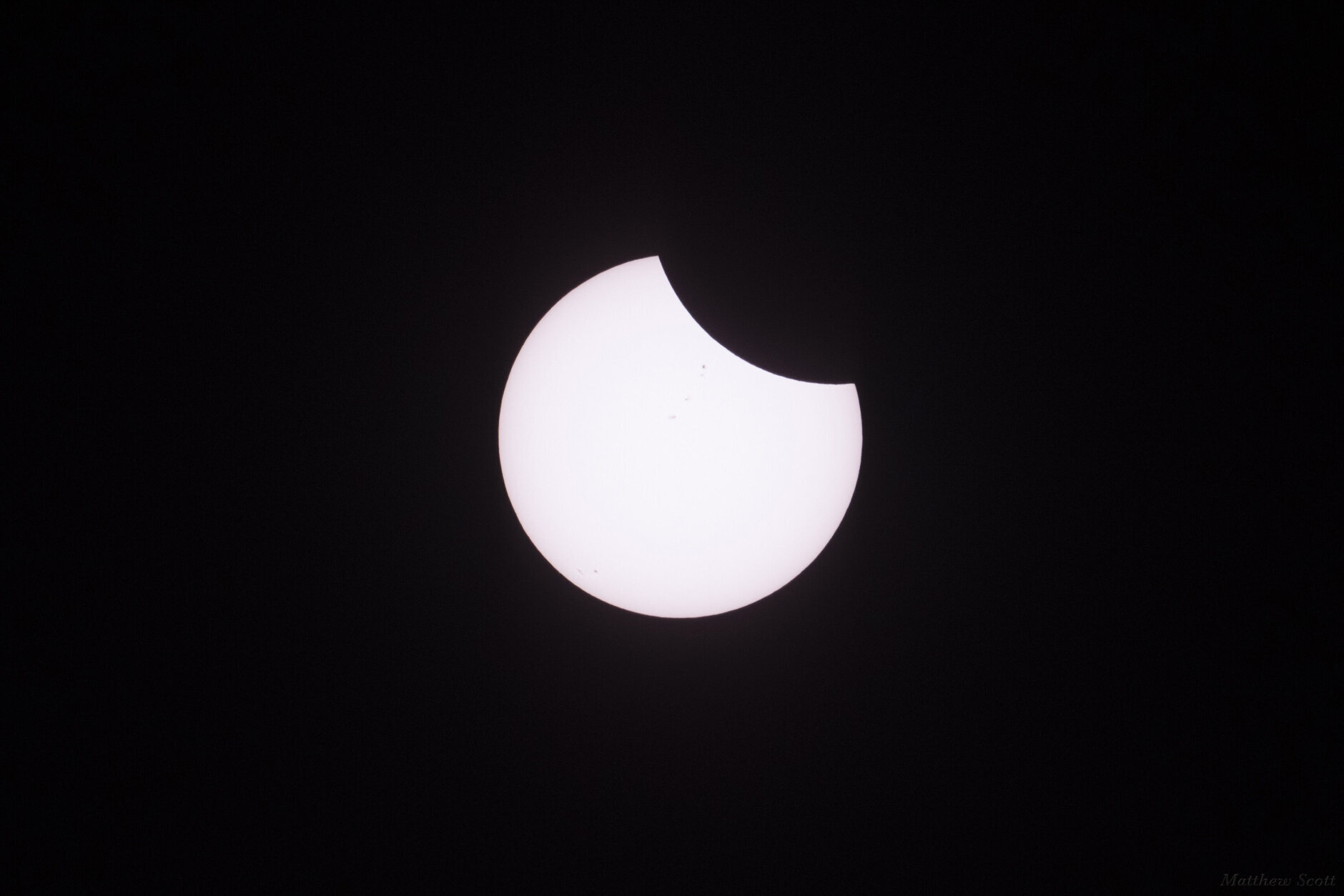
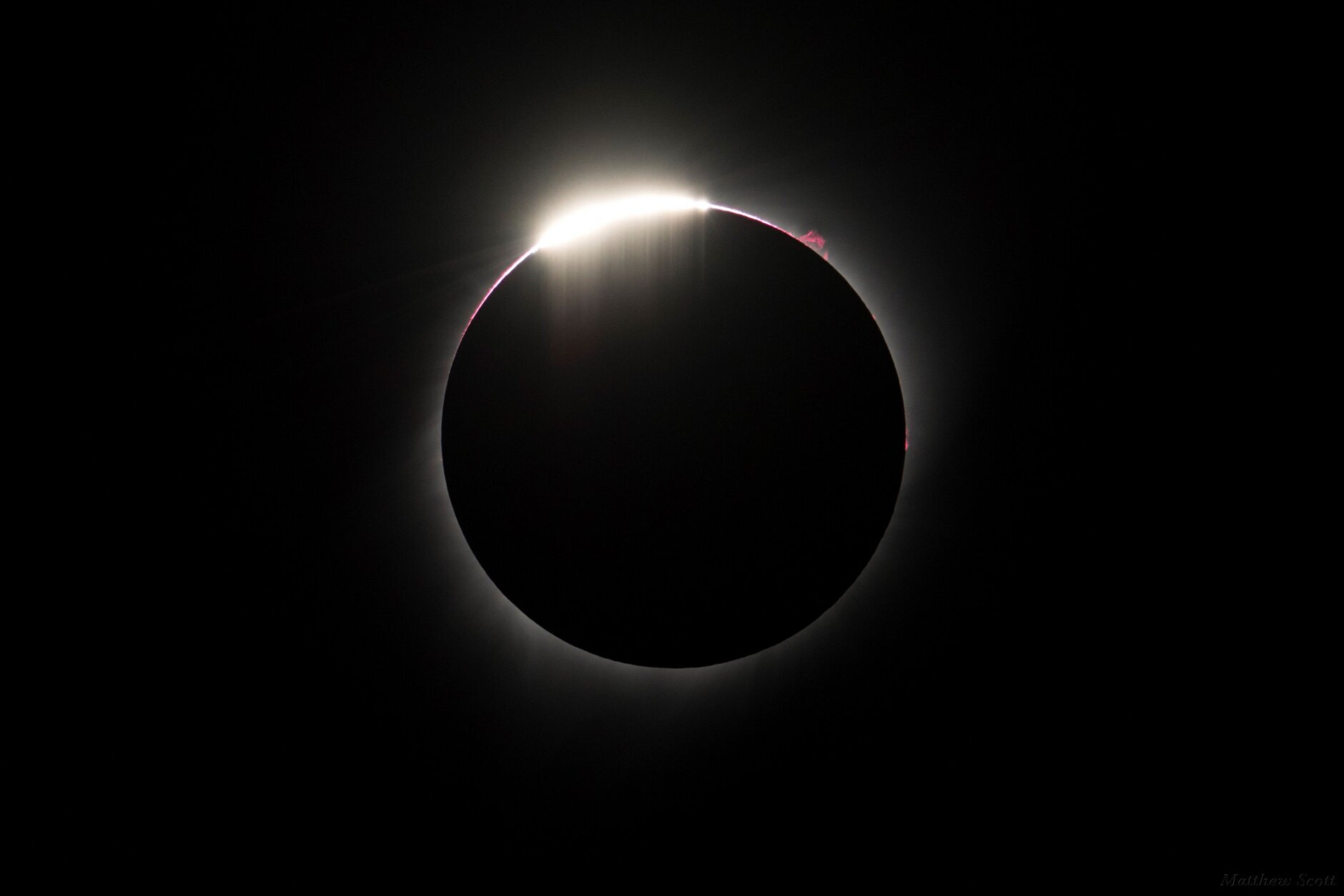
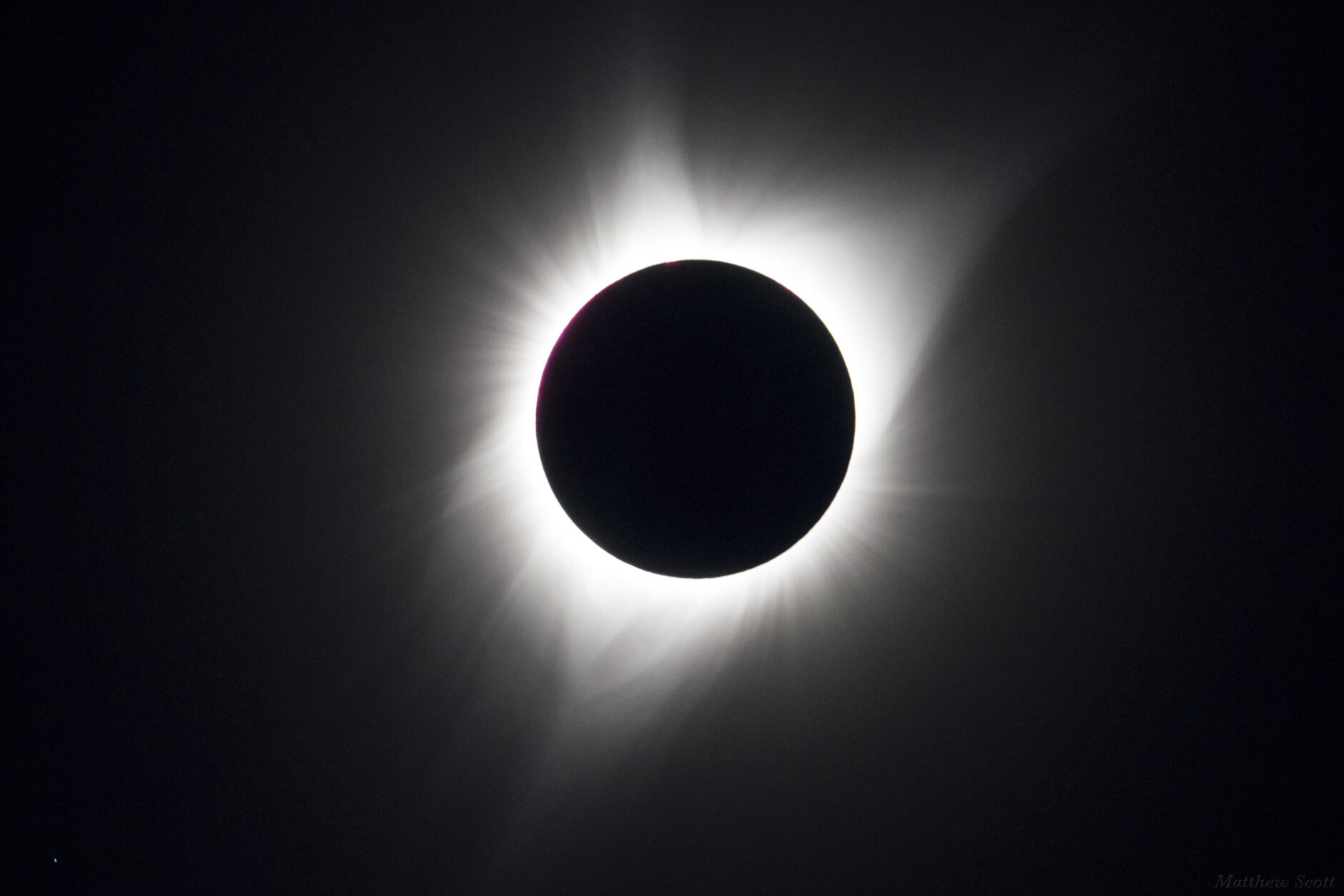

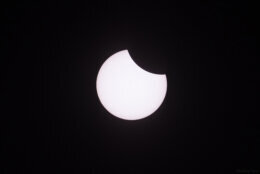
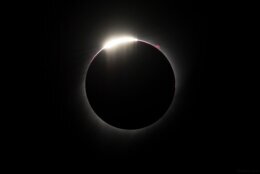
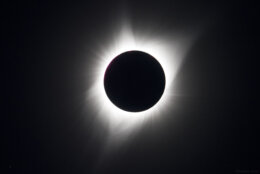

For decades the sun has yielded many scientific clues, but there may be no better time to study the hot, blazing ball of fire than when the moon fully blocks its face.
Some of the most notable discoveries were made during total eclipses, and astronomers hope Monday’s phenomenon delivers more new scientific developments.
More on the solar eclipse:
- What to know about Monday’s total solar eclipse in the U.S., Mexico and Canada
- Not in the path of totality? You can still watch Monday’s total solar eclipse online
- Blind people can hear and feel April’s total solar eclipse with new technology
- ‘Don’t damage those eyes’ observing Monday’s solar eclipse, medical expert says
- Where to find eclipse glasses and watch parties around the DC area
“It’s so amazingly beautiful during totality, when you can see the beautiful atmosphere of the sun,” said John Mulchaey, an astrophysicist at the Carnegie Institution for Science. “And you’re just like, ‘How? How is this happening?’”
Total solar eclipses are important for scientific discoveries because it’s the ideal time to study the sun’s surface, which is only visible on Earth during such events.
In 1919, Albert Einstein proved his general theory of relativity with the help of fellow physicist Sir Arthur Eddington, who charted that year’s total eclipse as it moved over parts of Northern Brazil and Western Africa.
The theory supports the concept that light can bend around massive objects in space. Nowadays, astronomers use it to study galaxies and stars behind massive objects.
“It showed that there’s this new version of gravity we call general relativity,” Mulchaey said. “[Einstein] became an overnight celebrity.”
This year, scientists will only have about four minutes to study the outermost part of the sun’s surface, also called the corona.
Scientists had a little more time when a total eclipse occurred in India in 1868, leading to a major breakthrough. During the nearly seven-minute span, they discovered a key component of the sun: helium.
The element fuses with hydrogen to keep the sun burning hot and bright.
“There’s a lot of helium on the sun,” said Mulchaey, who earned his doctorate in astrophysics from the University of Maryland. “But it’s not very valuable to us in terms of our balloons here on Earth.”
Scientists and researchers are hopeful they will discover new breakthroughs this time around, which will move along a narrow path from Mexico through the Midwestern U.S. and end up in Canada.
Several eclipse experiments are in the works, Mulchaey said. One of them includes collecting data and photos of the sun’s corona from a large group of amateur astronomers planted along the eclipse’s route.
“It’s called citizen science,” he told WTOP. “There will be a time sequence and we’ll get a whole series of exposures and that really hasn’t been done properly yet. It’s a great experiment.”
Mulchaey said he has prepared for this total eclipse for at least six months, as NASA says the next North American phenomenon will not occur for 20.5 years on Aug. 23, 2044, and it won’t be as large as Monday’s big event.
“It’s difficult to describe the emotion of a total solar eclipse. But it is a truly emotional experience,” he said. “I do tell people they must once-in-their-life go see a total eclipse somewhere. It is worth it.”
Get breaking news and daily headlines delivered to your email inbox by signing up here.
© 2024 WTOP. All Rights Reserved. This website is not intended for users located within the European Economic Area.


